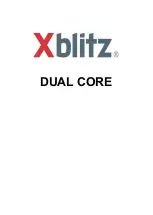
- 65 -
C
Communication
Communication has four components: sender, receiver,
message, and medium. In networks, devices and
application tasks and processes communicate
messages to each other over media. They represent
the sender and receivers. The data they send is the
message. The cabling or transmission method they use
is the medium.
Connection
In networking, two devices establish a connection to
communicate with each other.
D
DHCP
Developed by Microsoft, DHCP (Dynamic Host
Configuration Protocol) is a protocol for assigning
dynamic IP addresses to devices on a network. With
dynamic addressing, a device can have a different IP
address every time it connects to the network. In some
systems, the device's IP address can even change
while it is still connected. It also supports a mix of static
and dynamic IP addresses. This simplifies the task for
network administrators because the software keeps
track of IP addresses rather than requiring an
administrator to manage the task. A new computer can
be added to a network without the hassle of manually
assigning it a unique IP address. DHCP allows the
specification for the service provided by a router,
gateway, or other network device that automatically
assigns an IP address to any device that requests one.
DNS
Domain Name System is an Internet service that
translates domain names into IP addresses. Since
domain names are alphabetic, they're easier to
remember. The Internet however, is really based on IP
addresses every time you use a domain name the DNS
will translate the name into the corresponding IP
address. For example, the domain name
www.network_camera.com
might translate to
192.167.222.8
.








































